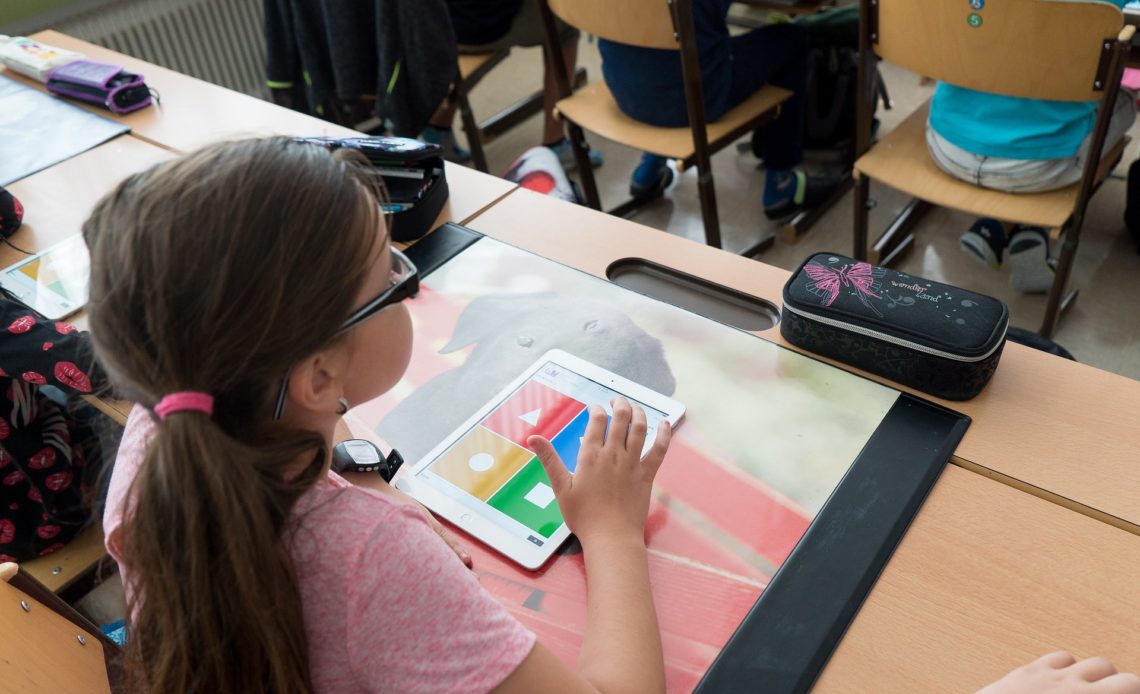
Education has progressively moved online, and it is not just due to the COVID-19 pandemic. Teachers and students interact one-on-one or in a group setting with language apps, video conferencing tools, education platforms such as Google Classroom, Seesaw, EdPuzzle, and kahoot!, and meeting tools such as Zoom and Google Meet. The U.S. K-12 sector spent $35.8 billion in 2020 on all things EdTech.
It is not only the school day that has moved online but also homework. Students must have sufficient bandwidth and reliability to keep up with their peers effectively, interact with teachers and classmates, and do assigned schoolwork.
The impact of the COVID-19 pandemic
The global pandemic has undoubtedly made the internet gap more apparent. Worldwide, there were more than 1.2 billion children in 186 countries affected by school closures. In the U.S., 58% of students said they use the internet every day or almost every day, in 2018. The figure is undoubtedly higher post-pandemic.
However, not all students who need to be online from home to do their assignments can do so. In Indonesia, 66% of students do not have a computer where they live. In the U.S., 17% of teens aged 13-17 are often or sometimes unable to do their homework due to either no computer or an unreliable internet connection. Lack of Internet access at home is a major problem for about 15 million to 16 million students, or 30% of all K–12 public school students in the US. The root causes of this divide are the lack of affordability, lack of availability, and lack of adoption.
Some schools invested in building LTE networks using lower-frequency Educational Broadband Service (EBS) spectrum at 2.5 GHz, but largely remained unused due to lack of sufficient spectrum or the cost of implementing private network. Many school districts are finding the answer to their student’s lack of accessible internet or reliable service in private cellular networks using shared CBRS 3.5 GHz spectrum band. Private networks can be implemented using LTE or 5G in multiple ways by either the mobile network operators (MNOs), Wireless Internet Service Providers (WISPs), neutral host providers, or system integrators.
Deployments of private networks in schools
Many educational districts have found that the CBRS 3.5 GHz band in the U.S. is ideal for private networks. The signal can both travel a good distance and carry high throughput. The Patterson, CA school district found it to be an excellent solution to their problem – 14% of their K-12 students either had no internet connection or one that was insufficient for distance learning. BearCom and Motorola designed a private LTE network in the CBRS 3.5 GHz band that provides broadband internet to six Patterson schools, with two more in the planning stage. Once complete, the network will provide high-speed internet to the districts’ 6,000 students.
Another CBRS installation was done in the McAllen, TX school district, 11 miles from the southern border. Roughly 70% of their 23,000 K-12 public school students live in economically disadvantaged homes and needed access to broadband internet for virtual classes. All students were provided with an iPad or Chromebook but lacked a reliable internet connection if they even had one. The city was offered a solution but needed the work completed prior to school starting last August – a deadline of fewer than 80 days. Frontera Consulting, working with equipment manufacturers Cambium Networks and Federated Wireless, needed only 74 days to deploy 1,000 outdoor Wi-Fi access points and 24 CBRS nodes.
Other institutions using CBRS to underpin their private networks include the Utah Education and Telehealth Network (UETN), to connect 25 schools, and the Collinsville (Illinois) Community Unit School District #10, which uses four Nokia CBRS microcells to provide 500 area students with broadband internet.
These cases were, mostly, paid for with funds from the federal Coronavirus Aid, Relief, and Economic Security (CARES) Act.
It is not only CBRS that underlies private networks in education – Wi-Fi does also. In Lindsay, CA, most students come from underprivileged homes. To help with students’ studies, the school district developed a plan to connect 75% of student homes with a meshed Wi-Fi network, which runs on the free, unlicensed 5 GHz band, saving operating expenses.
College campuses will also be using private networks. AT&T is installing a private 5G network at the Stamford campus of the University of Connecticut, with plans to open this summer. It will run in the so-called “millimeter wave (mmWave)” band, which operates at 28 GHz and above in the “high-band” wireless arena.
Conclusions
Private networks are helping students around the world stay connected with their schools, teachers, and classmates. From elementary-age children to doctoral candidates, private networks help students engage with the community safely and reliably. The coming years are expected to see a massive jump in the number of LTE and 5G private educational networks, enriching the lives of both children and parents.
Learn more about Private LTE Network


